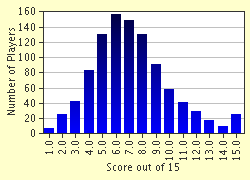Quiz Answer Key and Fun Facts
1. Nicholas was the bishop of the diocese of Myra in what was once known as Asia Minor. Myra is currently known as Demre; what country is it in?
2. Although he enjoyed a great reputation for his holiness and charity, little is actually known about Nicholas' life. We do know, however, that he was imprisoned for his faith at one point. Under which Roman emperor did this occur?
3. Nicholas was known to have been present at the historic church council at Nicea. Which of these momentous events did NOT occur at the Council of Nicea?
4. Nicholas died around the year 350 A.D. What was the date of his death, which is also his feast day?
5. Many legends began to appear about Nicholas in the Middle Ages. According to one, he saved three dowerless girls, whose father was going to sell them into slavery, by bestowing upon them three purses of gold (or, according to some versions, three golden balls) while they slept at night. Which Christmas tradition was inspired by this legend?
6. Which of these is St. Nicholas NOT (officially) the patron of?
7. In the year 1087, St. Nicholas' relics were brought to this Italian city, where they were enshrined.
8. St. Nicholas is the patron of Sicily, Greece, Apulia, Lorraine, and this country, where it used to be said "Even if God dies, we still have St. Nicholas."
9. The name Santa Claus was probably derived from Sinterklaas (alternately Sint Niklaas, or Sint Nikolaas), which is what St. Nicholas is called in the language of this European country.
10. As Europe became Christianized, certain deities who had been worshipped by the pagans were replaced by Christian saints, while still retaining many of their traditional characteristics. The transmogrification of St. Nicholas into Santa Claus represents probably the most striking example of this practice. Which of these pagan gods did NOT contribute some attributes to the St. Nicholas/Santa Claus legend?
11. It was in the Church of St. Nicholas in Obendorf, Austria, that this beloved Christmas song was written on Christmas Eve in 1818.
12. "Bishop's bread" and "bishop's wine" are traditional holiday treats associated with the feast of St. Nicholas.
13. A favorite tradition in parts of Europe for St. Nicholas' day was to give children the run of the house or school for the day and to elect a "boy bishop", or "Lord of Misrule", who would take charge of the proceedings. On which other Christmas-related church feast was this tradition sometimes practiced?
14. Santa Claus is also known as Kris Kringle. What is the origin of this name?
15. Visits from St. Nicholas on the eve of his feast day were (and are) a favorite tradition in many parts of Europe. Which of these classic children's novels describes such a visit?
Source: Author
jouen58
This quiz was reviewed by FunTrivia editor
DakotaNorth before going online.
Any errors found in FunTrivia content are routinely corrected through our feedback system.

